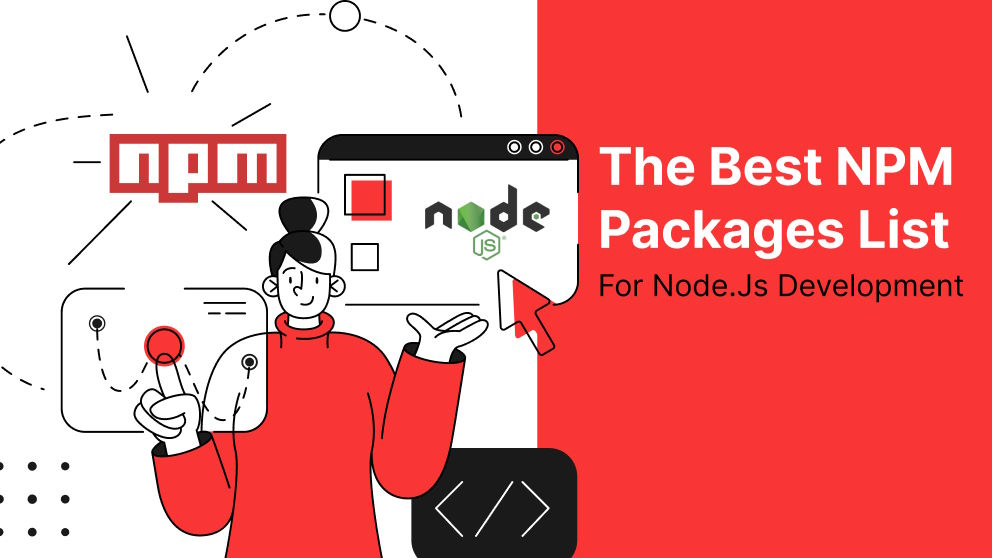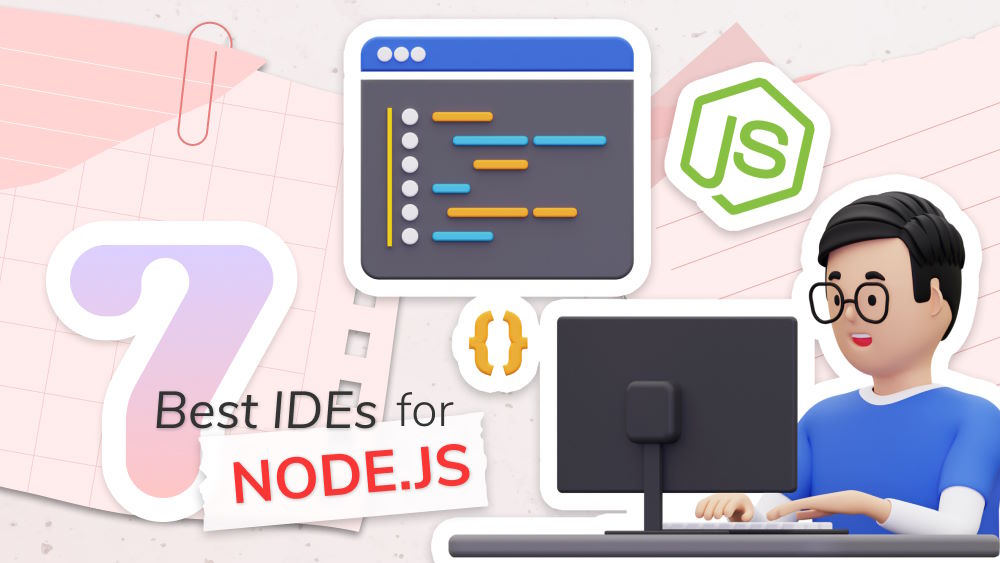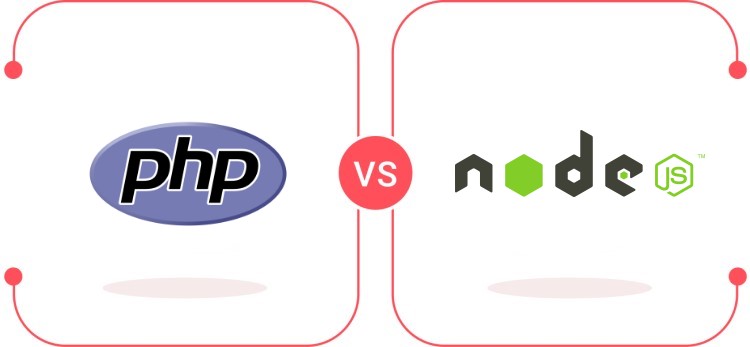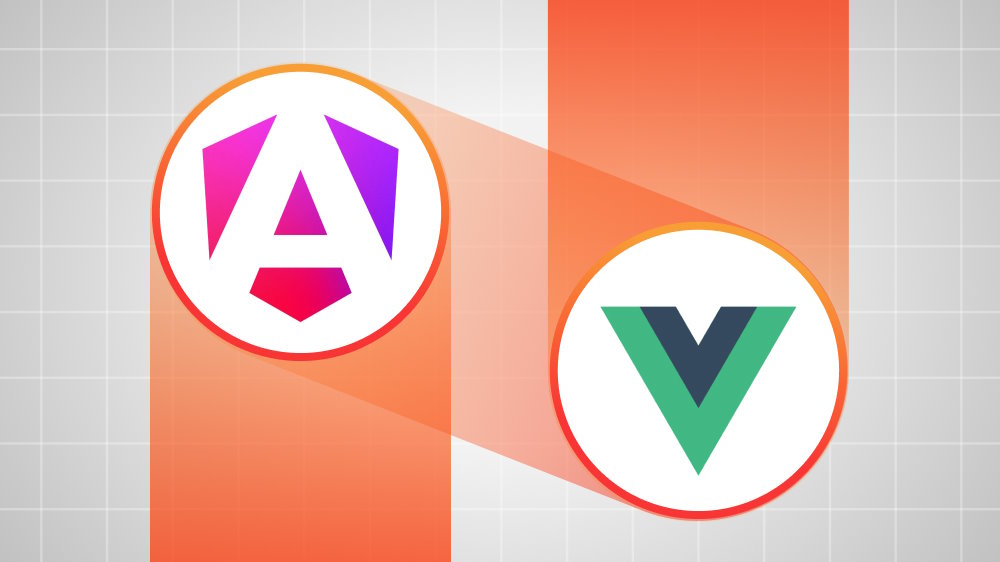Top Node JS Advantages That Set It Apart from Other Runtime Environments
Node JS expands JavaScript beyond the browser, making it one of the most versatile programming languages today. Before going deeper with JavaScript for full-stack development, make sure you don't miss any valuable information of Node.js runtime environment.

Content Map
More chaptersDeveloping web applications is more than a daunting task that requires tons of challenging tasks, from planning software development to designing an intuitive user interface. While every step in the development process affects the product outcomes more or less, choosing the right technology stacks is the most important in setting the foundation for the project’s success.
With numerous options available, JavaScript is considered one of the most popular programming languages that has undergone significant expansion in recent years. The popularity of JavaScript code is increasing with the advent of an open-source runtime environment called Node.js. The powerful combination of JavaScript and Node.js has revolutionized web app development, providing a unified language for both frontend and backend development and facilitating seamless communication between client and server.
Like any technology, Node.js has its own pros and cons to consider. Before going deeper into the development process with the help of this JavaScript runtime, make sure you equip yourself with the necessary knowledge of Node JS advantages and disadvantages.
An Introduction to Node.js for Web Development

Node.js is described as an open-source and cross-platform JavaScript runtime environment that enables web developers to execute JavaScript code on the server side outside a web browser. It was initially built on Chrome’s V8 engine and has gained immense popularity since its release in 2009.
Different from some current technologies, Node.js sets it apart by offering event-driven architecture and non-blocking, which makes it highly scalable for building real-time systems, including collaborative tools, multiplayer games, and chat applications. Node.js uses a single-threaded event loop to help coders completely eliminate bottlenecks where multiple concurrent requests are handled synchronously, resulting in the ability to handle high traffic loads and numerous simultaneous performance connections while maintaining low latency.
The market share for Node.js has been steadily increasing. The popularity of Node.js is explained by its compatibility with JavaScript, which is widely used for front-end development. This powerful combination has helped developers use a single language throughout the entire development lifecycle, thus simplifying the process and improving productivity.
Delving into Node.js Advantages and Disadvantages

3.1% of known websites use Node.js as their web server. With millions of websites using Node.js, it has proven to be a robust choice for web development. However, besides the advantages, this technology still has potential weaknesses that force users to accept and resolve if possible. What are they? Here is a detailed explanation of the Node.js nature that you will definitely need when kickstarting your web development projects.
Advantages of Node.js
#1 High Performance
Based on the Node.js 2018 User Survey, more than 85% of the respondents utilize the JavaScript runtime in their web applications. One of the biggest reasons users choose Node.js over other technologies is its performance advantages. So, where does Node.js high speed and performance come from? Yes, V8 JavaScript engine.
Developed by Google, the V8 JavaScript engine processes JavaScript code by converting it into machine code, which can be directly executed by the computer’s processor. This process is also known as JIT (Just-In-Time) compilation. JIT compilation itself, in combination with various optimization techniques, enables the JavaScript V8 engine to dynamically optimize the speed of generated machine code based on runtime information, leading to faster code execution times compared to traditional interpreters.
#2 Non-blocking I/O Operations
Non-blocking I/O operations are considered one of the most outstanding features of Node.js that allow Node JS developers to handle multiple concurrent requests efficiently at the same time without blocking the event loop.
In a traditional synchronous programming model, including reading data from a file or creating a network request, the program execution is forced to halt until the I/O operation is completed. This means that, in case there are many operations taking place sequentially, each subsequent operation has to wait for the previous one to finish before it can proceed, resulting in performance bottlenecks.
Node.js completely solves this problem by using a non-blocking I/O model. No more unwanted interruptions; Node.js initiates an I/O operation and executes other tasks concurrently. When such a process completes, the JavaScript runtime environment immediately performs a callback function associated with that operation. This asynchronous programming model helps the event loop remain free from blocking operations and maximize resource utilization.
#3 Cross-platform Support
With Node.js and its cross-platform support, developers only need to write code once and then run it on multiple operating systems, such as Windows, macOS, and Linux, without requiring platform-specific adaptations.
Node.js achieves this compatibility thanks to its underlying JavaScript runtime environment, which is designed to be platform-independent. Letting core functionality and APIs provided by Node.js work consistently across different target platforms helps developers ensure the smooth execution of the same code without the need for significant modifications.
Technologies that support cross-plat from capability also bring tremendous value to development teams that need to deploy and run software products on multiple operating systems, thus eliminating separate codebase maintenance.
#4 Real-time Applications
If you are planning to deploy and develop a real-time application that requires instantaneous communication and data updates, a chatbot, for example, Node.js, could not be a more suitable choice.
Unlike in traditional apps, where the data processing mechanism is forced to follow separate steps, including the client sending a request to the web server and the web server responding with the requested data, real-time applications have high requirements for continuous data flow between the client and the server.
Luckily, Node.js easily fulfills this requirement with the help of event-driven and non-blocking architecture. This runtime environment can handle a large number of simultaneous connections and push data in real time without sacrificing performance, making it a perfect fit for applications with high real-time traffic loads. Users of any chat application built with Node.js can now instantly send and receive messages without reloading the page.
#5 Unified Language
As a JavaScript runtime environment, Node.js uses only the same language for both frontend and backend development, leading to several benefits, including improving overall productivity and reducing context switching. Developers reduce the burden of switching between different languages, tools, and frameworks when working on different parts of the web application, which is time-consuming and mentally taxing.
Supporting users to work in a unified environment also helps developers eliminate the need to learn and use many new languages, increasing communication efficiency and cooperation within the development team when all members are on the same page.
#6 Microservices Architecture
Node.js works well in a microservices architecture, where individual components can be developed and deployed independently, promoting scalability and maintainability. Microservices architecture is described as an architectural style where a software product is created as a collection of loosely coupled services.
Node.js’s non-blocking and lightweight nature, coupled with its ability to handle multiple concurrent efficiencies, makes it well-suited for scaling individual microservices. By leveraging microservices architecture in Node.js, developers provide better fault isolation as issues in one service are less likely to affect others or the entire application.
#7 Fast Development
Node.js has several features and characteristics that make it advantageous for rapid development. As mentioned above, Node.js follows an event-driven architecture, where callbacks are used to handle events asynchronously. Instead of processing them one by one, the non-blocking I/O model allows developers to handle multiple concurrent requests efficiently without blocking the code execution flow. This method, on the one hand, helps the event loop remain free from blocking operations and, on the other hand, increases the ability to handle a large number of simultaneous connections.
Besides, Node.js also optimizes development speed with the help of JSON (JavaScript Object Notation) format, which is easy to read and write for both humans and machines. JSON format is a popular choice for exchanging structured data between the client and the web server components of a web application, facilitating faster development and integration without the need to convert between binary models.
#8 Large Ecosystem
Centered around the npm (Node Package Manager) registry, Node.js provides a thriving ecosystem of over a million modules and packages, including open-source library support, Google Chrome developer tools, and web development frameworks. This expansive collection provides developers with a wealth of resources to enhance their Node.js projects of any kind.
Developers now no longer have to spend too much time on development and deployment. Whether they need packages for web development, software testing, or server-side rendering, chances are there is a package available to meet your specific needs. It is this diversity that helps developers quickly find and integrate specialized tools into their projects, as well as easily add new functionality to inherent applications without having to write everything from scratch, thus saving time and effort for other urgent tasks.
#9 Community Support
The Node.js ecosystem is not only vast but also expanding at breakneck speed thanks to the contributions of developers around the world. As a runtime environment that allows developers to execute JavaScript code, one of the most popular programming languages, Node.js inherits an extensive community of developers who actively contribute to its growth, providing support, documentation, and sharing best practices and libraries.
When joining this ecosystem, users are completely free to interact with other peers to seek help and share valuable insights. This network of support ensures that all programmers can find assistance and gain knowledge without geographical barriers. Strong collaboration between community members plays an important role in the continuous improvement and enrichment of the available packages, ultimately leveraging the sustainable development of Node.js.
Disadvantages of Node.js
However, no technology is perfect, and Node.js is no exception. Below are some Node JS disadvantages businesses need to consider before the development stage. It is worth noting that many of these disadvantages can be mitigated through best practices, architectural patterns, and leveraging the extensive Node.js community support.
- Single-threaded Nature: Because Node.js has a single-threaded nature, heavy computations or tasks that require CPU-intensive processing power may block the event loop, affecting the project’s overall performance.
- Callback Hell: Writing asynchronous code in Node.js relies heavily on callbacks or promises, which may potentially lead to “callback hell.” This term refers to a state where deeply nested code structures are difficult to read, understand, and maintain. This complexity in the codebase makes the final product prone to errors and challenging to debug.
- Immaturity of Some Modules: With the vast collections of packages available on the npm registry, it’s vital to be careful with the quality of certain modules as some may be relatively new or less maintained. Indiscriminate use of this resource can cause users to fall into potential reliability or security issues.
- Debugging and Error Handling: Debugging asynchronous code in Node.js can be a daunting task, especially when dealing with deep callback chains.
Frequently Asked Questions
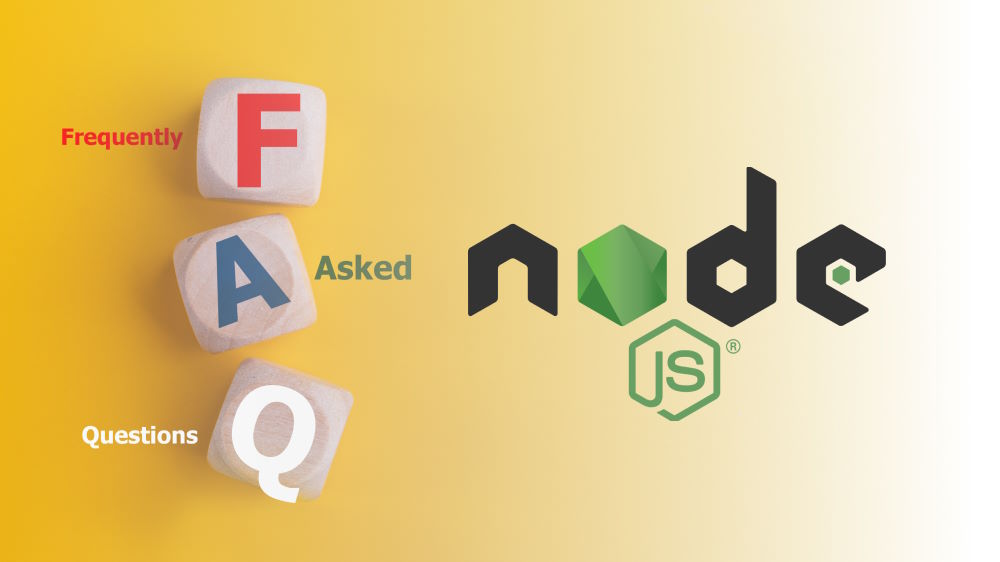
1. Is Node.js a programming language?
Node.js is not a programming language but a runtime environment built on the Chrome V8 engine, allowing developers to execute JavaScript code outside a web browser and build scalable network applications.
2. Is Node.js only used for web application development?
Besides web app development, Node.js is versatile and suitable for various other development scenarios, including desktop applications, IoT, command-line tools, and robotics.
3. Is Node.js suitable for small projects or only large-scale applications?
Node.js is a flexible and scalable platform well-suited for projects of any size, including both small and large-scale applications.
4. What frameworks are available for Node.js?
There are several popular frameworks for Node.js, such as Express.js, Nest.js, Koa.js, Hapi.js, and Meteor.js, which all help developers simplify the development process.
5. Are there any notable companies or products that use Node.js?
Netflix, LinkedIn, Uber, Trello, PayPal, and Walmart are some well-known companies or products that use Node.js for their backend or full-stack development.
Despite the growth in popularity, whether Node.js will lose its position in the future is still considered an open question. However, with all the Node JS advantages, users can completely trust this technology and continue to use it more widely for building web applications.
Not just Node.js software development, Orient Software provides technology services for almost every language currently on the market. Contact us to receive a free quote.



